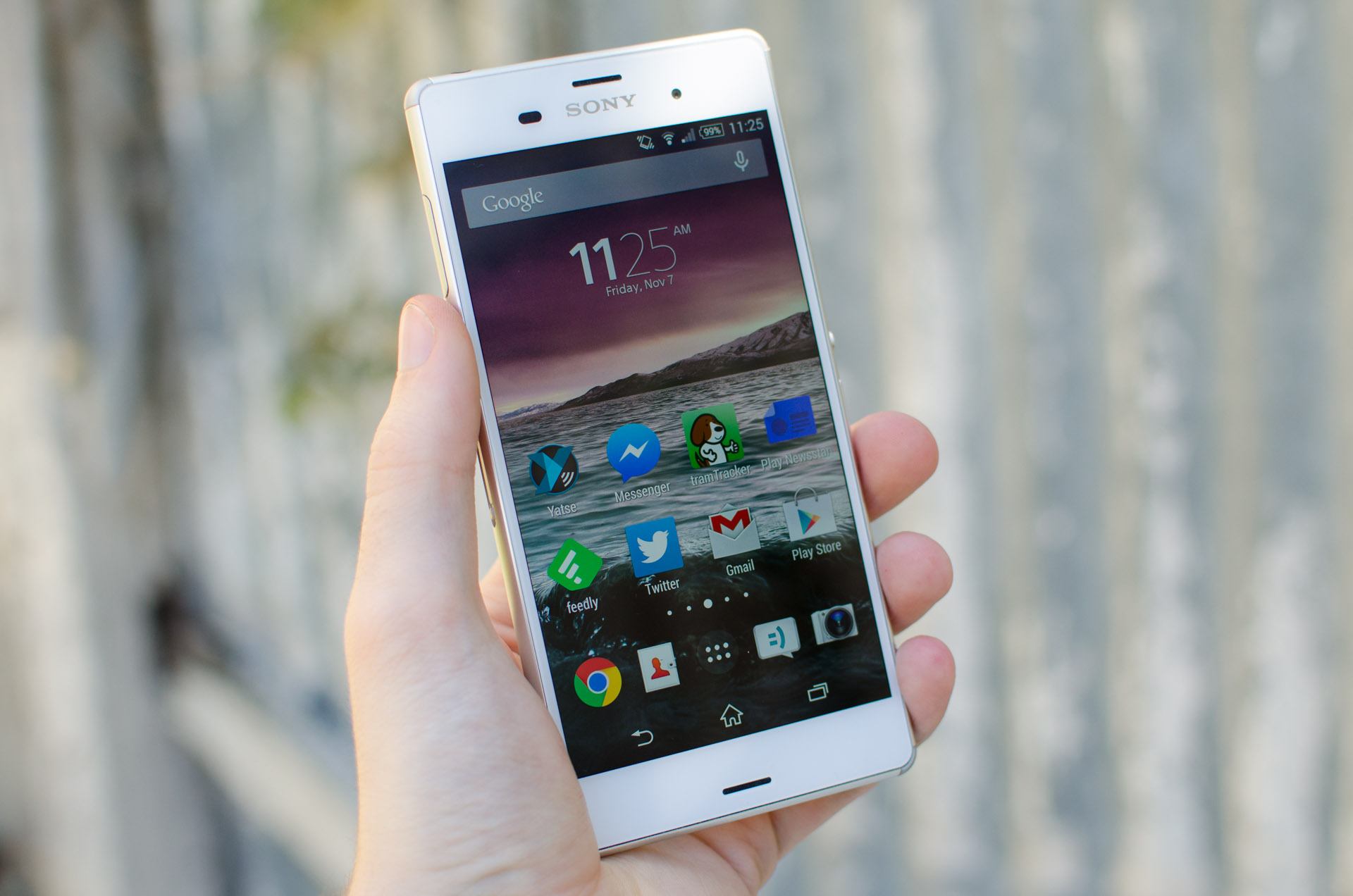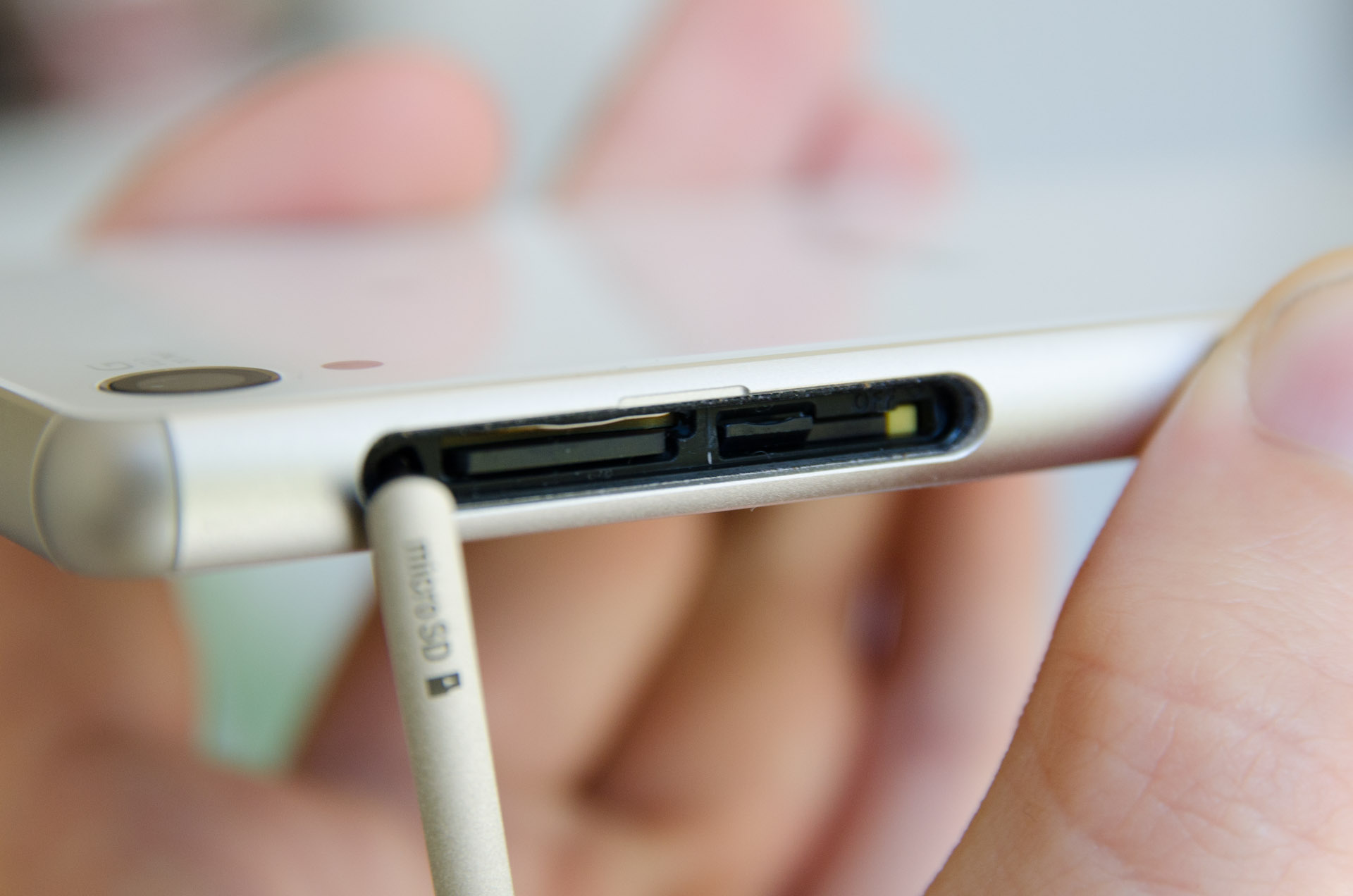Sony Xperia Z3 Review
It seems like just yesterday I was sitting at my desk, new phone in manus, typing out my review of the Xperia Z2. It was Sony'southward flagship that many of us thought would take the visitor through to the terminate of 2014, nonetheless here I am, not fifty-fifty half-dozen months later, reviewing its successor. Either Sony has a ridiculously fast release schedule, or the technology market is moving at an ever increasing stride. I'm thinking the onetime…
Compared to the Z2, Sony has made some infinitesimal changes in the Xperia Z3. We're looking at a very slightly upgraded Snapdragon 801 SoC, a marginally smaller 3,100 mAh battery, a thinner pattern, and a few tweaks to the software. You'd be forgiven if you thought the Z3 was in fact the Z2, considering the photographic camera and display are substantially the aforementioned as well.
But the Z3 isn't designed as a direct upgrade for those people rocking the Xperia Z2, or even last year's Xperia Z1. Instead it's clear that Sony has been tinkering with the perfect smartphone formula, crafting something that can provide a balance of blueprint, functioning, camera quality, and battery life. Sony wants this to be the ideal upgrade from the Xperia Z, and on top of that, they want the Z3 to be then well made that users of competing products might consider a switch.
All the same, I do take to wonder about Sony'due south strategy of releasing a new phone every half dozen months or and so. The launch of the Xperia Z3, which is near identical to its predecessors, feels a little underwhelming when the market but went through another iPhone launch. On pinnacle of that, Sony's fast release cycle quickly devalues products that some people have simply purchased, which affects the level of buyer's remorse in the Sony camp.


From an outsider's perspective (I'm not party to Sony's marketing strategy), a new flagship smartphone every vi months seems a also fast, with many companies getting it correct with a yearly schedule. However, if these small increments have finally allowed Sony to really hit the nail on the head and deliver a height-notch product, I'll probably forgive them.



The Xperia Z3 still features Sony'southward signature design that started with the original Xperia Z near ii years ago. It's mostly a thin rectangular slab with a display centred on the front, and minimal design cues extending to the clean rear console. Both the front and back are constructed from Gorilla Glass 3, giving the smartphone a loftier-finish wait and feel at the expense of increased fragility over metal or plastic.
Despite the inclusion of ii slabs of glass, the Xperia Z3 feels very solid. The body is extremely tough with little (if any) flex, helped by the aluminium edges that increment its strength. The aluminium isn't just for structural integrity though: it makes the handset feel like a nicer, higher-end production in your hands, while also improving the aesthetics through a pleasant shimmery silver that complements the white body. Like previous Xperias, the Z3 is also available in black every bit well as greenish and copper.


The main visual deviation between the Xperia Z3 and the Z2/Z1 is the refined design of the edges. Sony has added in a more accentuated curve to what used to be a pretty harsh, flat border, noticeably improving how the telephone fits in your paw. When these ergonomic changes are combined with the thinner and lighter body – 7.3mm and 152 grams, downward from 8.2mm and 163 grams in the Z2 – the Xperia Z3 is the easiest of the full-sized Zs to operate.

While there are new placements for the two front-facing speakers, notification LED and front-facing camera, I yet experience similar the bezels on the Xperia Z3 are too large. Those that flank the brandish to either side are fairly standard, but those to the acme and bottom extend beyond what seems reasonable for the brandish size. Shrinking these bezels down would improve the phone'southward display coverage (71%) and make it easier to handle.
The Xperia Z3 is still h2o resistant, packing an improved rating of IP65 and IP68. This indicates the smartphone is dust tight, and can withstand low pressure level water jets and immersion in fresh water upwards to 1.5m in depth for 30 minutes. For those that frequent pools or desire to game in the shower, this is a handy characteristic, though keep in mind that the Z3 is not resistant to salt water. In other words: don't take it into the ocean, or you lot might find the table salt will corrode the internal components.



The choice to h2o proof the Z3 means in that location is a flap to protect the microUSB charging/data port. Aye, you can accuse the Z3 via the magnetic dock port on the left side, simply if you lot don't desire to shell out for the compatible dock or proprietary charging cable, you'll have to bargain with the abrasive cover. Luckily, information technology feels sturdy and secure, so information technology's unlikely to break off whatsoever time presently.
Sony has also rearranged the position and grouping of the 2 flaps on the Xperia Z3, improving usability. The left side features just the microUSB port, while the right flap contains both the microSD slot and nano-SIM tray. Although it can be tricky to use the nano-SIM tray, the grouping of the slots makes more sense than having the USB flap also uncover the microSD slot.

The right side besides packs the circular power button, which is slightly also small and too low down (though these are pocket-sized complaints). Beneath that is the book rocker and handy ii-stage camera button. The left edge has the magnetic charging port that both looks bad and feels bad, and a pocket-sized charm connector at the bottom. The superlative edge has the exposed 3.5mm sound jack.
The primary thing to have away from the design of the Z3 is that Sony has managed to make small-scale changes that add up to a refined experience. Cipher massive has happened in the six month flow betwixt the launch of the Z2 and Z3, but the Xperia Z3 feels undoubtedly better to touch and utilise.
Source: https://www.techspot.com/review/913-sony-xperia-z3/
Posted by: haughtstralf.blogspot.com


0 Response to "Sony Xperia Z3 Review"
Post a Comment